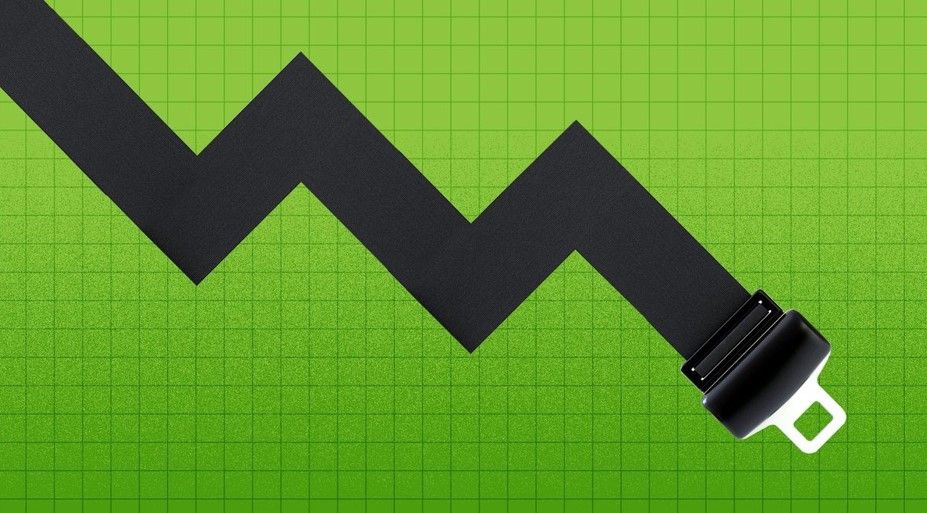Economy, eNews
Commercial Bankruptcies Hit 2010 Level

Commercial bankruptcies have skyrocketed since the historical lows during the height of the pandemic. At 236 corporate bankruptcy filings so far this year, the number is higher than the first four months of any year since 2010 and more than double 2022 levels, according to S&P Global Market Intelligence. They forecast that the U.S. default rate will rise to 4.25% by the beginning of next year, up from 2.5% currently—or to 6.5% if there is a serious recession.
In mid-May, Vice Media Group joined many of major companies to file for bankruptcy this year. “Vice’s bankruptcy documents tell the story in painstaking detail of what happens when the easy-money era comes to an end,” reads an article from Axios. “The first thing that happens when the ultra-easy access to funding dries up is the spigot stops for the companies that maybe shouldn’t be borrowing more anyway.”
Retail companies are some of the hardest hit in the current economic environment because they are susceptible to consumer buying changes. Inflationary pressures, high interest rates and supply chain issues are among the primary factors leading U.S. corporations to bankruptcy. And many finance analysts predict an economic downturn in 2023 that will contribute to even more tightening, said Christopher Ng, Esq., managing partner at Gibbs Giden Locher Turner Senet & Wittbrodt LLP (Los Angeles, CA). “Not to mention the weakened real-estate fundamentals where commercial properties are worth less so there is less desire for a bank to loan against these properties.”
The Problem with Subchapter V
Subchapter V bankruptcy filings increased 81% year-over-year in April, according to Epiq Bankruptcy. Subchapter V is a newer modification of Chapter 11 for small businesses, but it places a larger burden on creditors to collect debt. Only small-business debtors whose total debts do not exceed $7.5 million can file for Subchapter V. The initial debt threshold was roughly $2.75 million, but the CARES Act increased that limit for another two years—and the expectation is that the $7.5 million threshold will become permanent.
“The intent with Subchapter V is to streamline the process, and make it more efficient and less expensive for the debtor,” Jason Torf, Esq., creditors’ rights attorney and partner at Tucker Ellis LLP (Chicago) said during Subchapter V of the Bankruptcy Code: Its Impact on Trade Creditors. “But at the same time, it strips away certain elements of a traditional Chapter 11 that are beneficial to creditors.”
Credit professionals may be sitting on a ticking time bomb without even knowing it. In fact, most (40%) creditors do not know what percent of their portfolio is made up of customers who qualify for Subchapter V bankruptcy, according to an eNews poll—and the 31% who do know the answer say 10% or more of their portfolio qualifies for Subchapter V.
Creditors must be aware of how many of their customers could file using this subchapter because it makes it much more difficult to collect debt. You might even consider placing eligible customers in a higher risk category “because there will be a lot more factors working against the creditor if the customer files,” Torf explained. “There is an additional layer of risk with Subchapter V that does not exist in the traditional Chapter 11 route, and debt recovery is not as successful.”
How to Protect Your Company
From a creditor’s perspective, the key is mitigating risk immediately, especially when you know a customer is insolvent. “When they file for bankruptcy, there is a long checklist to follow,” Ng said. “Learn how to defend yourself in preference claims and make sure that you have as much security as possible with accounts, especially high risk accounts. In those cases, make sure you get alerts or that there’s a way for you to discern when a customer is building up inventory after years of not buying much.”
Revisit your credit policy and credit agreements, tighten your terms and try to secure collateral where possible using letters of credit, security deposits and secured interest. “Monitor your accounts receivable (AR) closely,” said Mike Mandell, corporate collection manager at Ryder Truck Rental, Inc. (Miami, FL). “For a Subchapter V, I recommend people talk to the trustee. I would try to see who some of the other unsecured creditors are to band together to look at how you can get better oversight in the case. I would encourage people to go to different organizations where us as unsecured creditors can all band together. There, you can lobby to get some of the rules changed on Subchapter V because it has not gone well for unsecured creditors.”





